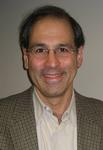Cited By
View all- Danielsson NWeirich S(2013)Correct-by-construction pretty-printingProceedings of the 2013 ACM SIGPLAN workshop on Dependently-typed programming10.1145/2502409.2502410(1-12)Online publication date: 24-Sep-2013
- Sewell PNardelli FOwens SPeskine GRidge TSarkar SStrniša R(2007)OttACM SIGPLAN Notices10.1145/1291220.129115542:9(1-12)Online publication date: 1-Oct-2007
- Sewell PNardelli FOwens SPeskine GRidge TSarkar SStrniša RHinze RRamsey N(2007)OttProceedings of the 12th ACM SIGPLAN international conference on Functional programming10.1145/1291151.1291155(1-12)Online publication date: 3-Oct-2007
- Show More Cited By




